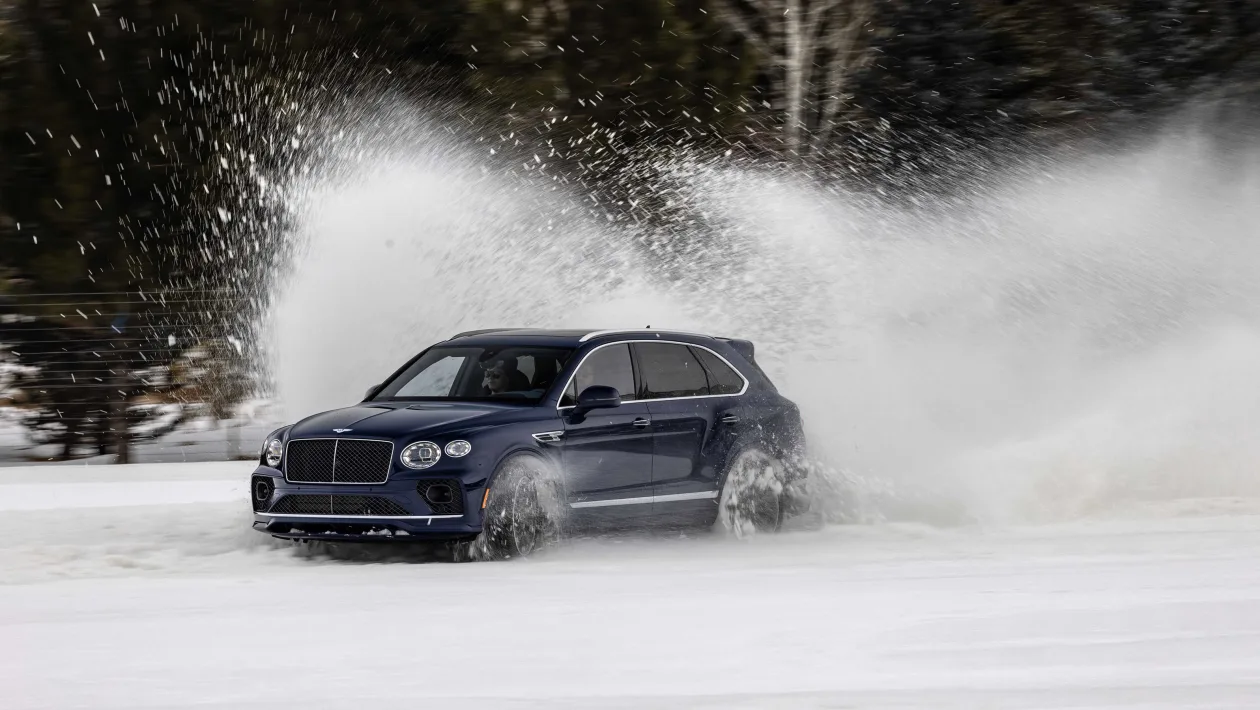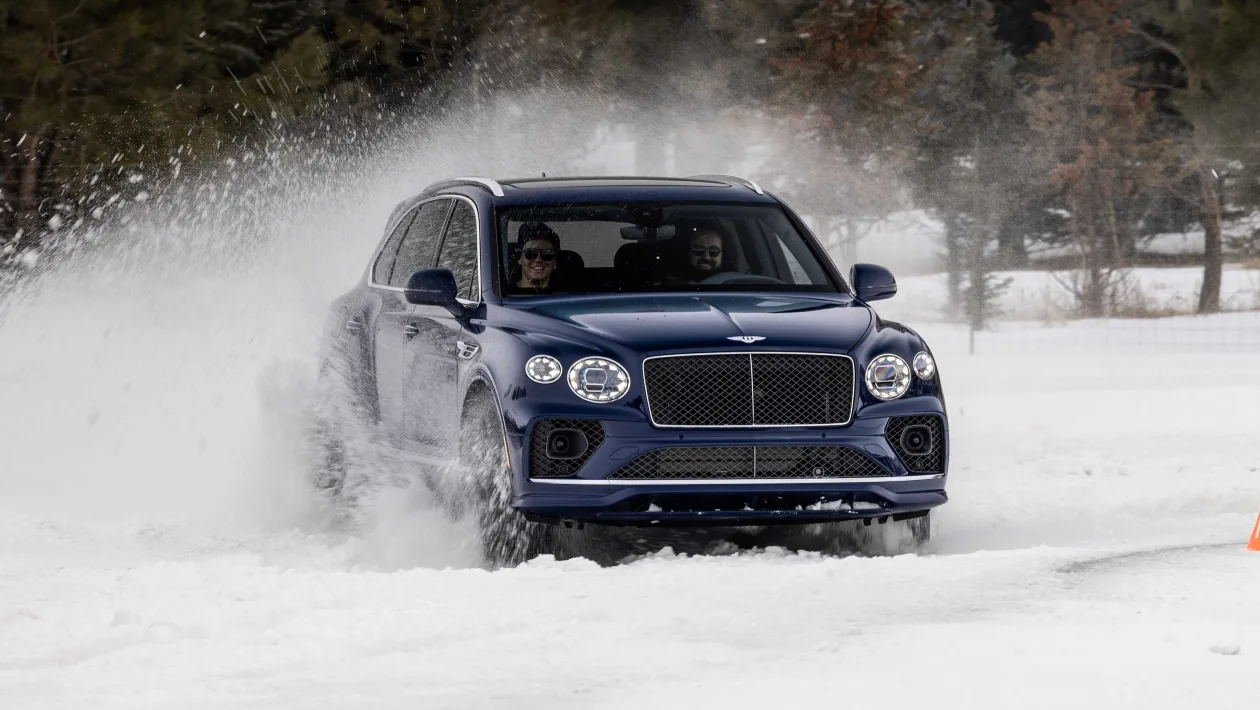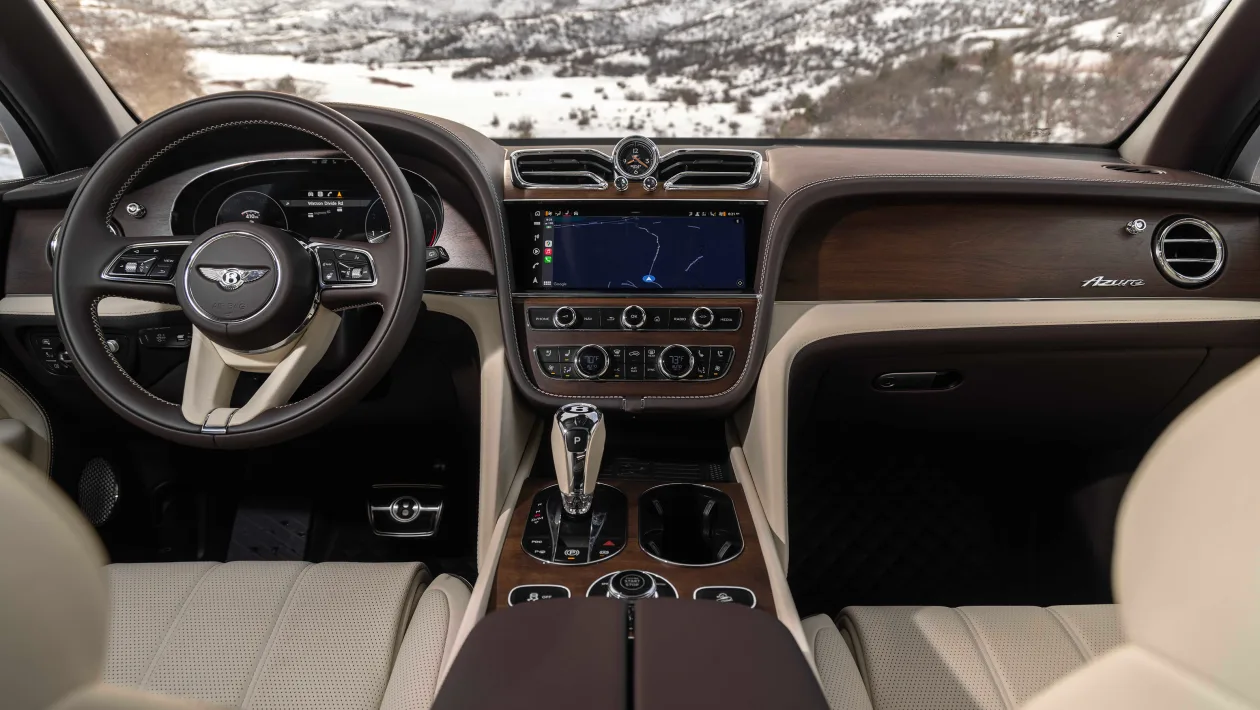As the British brand’s iconic engine prepares for its final curtain, we sample three Bentley cars that are powered by the twin-turbo unit.
Earlier this year Bentley announced that it would cease production of its iconic turbo W12 engine in April 2024, so what better way to mark the remaining 12 months of production than driving the best of the firm’s range in flagship W12-engined Speed trim? The venue is Aspen, Colorado, on a technical, icy, snowy track, plus some on-road miles too.
Bentley marked its milestone announcement by confirming the most powerful version of the motor yet, the ultra-exclusive 552kW Batur. Sadly, we won’t be able to get our hands on one of the 18 hand-crafted examples just yet, so we’ll have to make do with the ‘regular’ cars (if you could ever call a Bentley such a thing). But jumping behind the wheel of the Continental GT Speed is still a thrilling experience that reminds you of just how well suited the brand’s W12 engine is to its finest grand tourer.
First, let’s wind back the clock a little to understand the engine’s importance and why it’ll be so missed. At the start of the millennium, Bentley was a different brand to the record-breaking sales success it is today. Just a few years into Volkswagen Group ownership, the line-up consisted of the Arnage and Azure, plus the old-school two-door Continental, all powered by another iconic Bentley engine, the 6.75-litre V8.
Everything changed in 2003 when the Continental GT went on sale. Costing less than half the price of the old Continental R model, it boasted a 6.0-litre twin-turbo W12 motor producing 412kW, which was a lot for the time and still is today. Fast forward 20 years, three generations of Continental GT and more than 100,000 W12 engines built at Bentley’s Crewe factory (with a few for VW for its Phaeton luxury sedan, and some for Audi with its A8), displacing more than 600,000 litres and probably racking up more than six million horsepower, the curtain call for this fine feat of engineering is nearly upon us. If you’re quick, you might just be able to bag one of the few W12 build slots left.
As I crunch across the fresh snow towards the two-door GT, idling away with a gentle burble as clouds of vapour billow from its quad oval exhaust pipes, I shut the heavy door behind me and the world goes quiet. All I can hear is the faint hum of the engine ticking over as the gentle chatter outside is muted by the car’s brilliant double glazing.
The silence is shattered as I floor the throttle and the Bentley’s four driven wheels flick up chunks of snow that brush the underside of the body. The all-wheel drive system is searching for traction on the slippy surface as the W12 Speed’s monstrous 900Nm of torque is delivered from just 1500rpm, highlighting why it’s a brilliant example of the internal-combustion engine.
The torque peak is sustained until 5000rpm, where – conveniently – the maximum 485kW comes in, itself continuing for another 1000rpm. It makes for a brilliantly flexible powertrain with an unburstable feeling despite the Continental’s significant 2273kg kerbweight.
And this is part of the Bentley brilliance: how the W12 engine, along with many other chassis components in Speed form, have broadened the GT’s ability from being a consummate grand tourer into a genuinely engaging sports car, too. It’s gratuitous to hoof the throttle and feel the car’s clever electronic limited-slip differential arc the car into a graceful drift, but the fact that the Bentley can do it – and just as well on tarmac, as we’ve previously experienced – is superb. Of course, the rear-axle steering and myriad other systems are working away behind the scenes to make it an easy, enjoyable and exploitable experience.
But it’s always the engine that is front and centre. The fact that it has deep reserves of performance at any revs, yet that its forced induction doesn’t result in a lot of lag is incredible. Standing and watching the GT Speed do its thing from the boundary of the track, you can hear the pair of turbos gulping fresh, cool air as the driver demands power before coughing away its boost with a great woosh as they lift off again.
Inside, you get a deep, muted and bassy rumble, with the exhaust tuned for “greater character” during start-up and downchanges to reinforce the W12’s existence. It gives the Bentley presence in abundance – but the beauty is how this translates to its character on the road as well. That turbine-like engine and the acceleration it delivers is superb, while the adaptive air suspension balances its agility with comfort.
While this is evident and unexpectedly fun in the Continental GT, in the Flying Spur Speed luxury sedan it’s even more stark. Whether you’re cruising along a patchy British B-road, or an equally winter-ravaged wide highway in Colorado, the Spur’s comfort is supreme. Despite a little more weight than the GT, its performance is equally effortless and even more regal in the way it is delivered. The 467kW sedan’s vast bonnet subtly raises its angle of attack on full throttle with the retractable winged B emblem that sits proudly in the centre of the huge grille acting as a bore sight for the Bentley’s intended path.
Supplanting the standard W12-engined Flying Spur in the range, the Speed isn’t any less refined, it’s just an amplification of what makes a W12-engined Bentley sedan great. It’s just as comfortable and adept at carrying you long distances with seemingly little effort, only it’s faster doing it.
What it isn’t is quite as agile as the Continental GT Speed, but then you wouldn’t expect that anyway. The Flying Spur Speed’s engine still dominates, and the torque-rich delivery serves up the same 900Nm as the Continental GT in a similarly silky spread.
The long wheelbase means it’s out of its comfort zone on the snow track, the deep ruts that have formed through the long hairpin turns after a few laps mean the car’s underbody is now kissing the surface, but it’s good fun. It’s a great endorsement for what a standard road car equipped with winter tyres can do.
We know the Flying Spur is a peach on the road, with a blend of qualities that makes this one of the finest luxury sedan cars on sale today. We’re also sure that Bentley will build on its more than 100 years of experience in this field, launching a fully electric model every year from 2025 onwards up until the range is renewed for the next era in 2030. But we’ll be sad to see the W12 die next year as the brand moves towards hybrid power in the interim period.
To some people the huge-capacity, forced-induction unit is a symbol of excess, and in Speed form this quality is amplified to the maximum in the brand’s Bentayga. An SUV came late in Bentley’s 104-year history of building cars, having launched in 2015, but since then it’s been a sales sensation, going on to account for just under half of the more than 15,000 cars the company built last year.
On snow it’s the most impressive of the trio – for some reasons you might expect, but for some that you might not, too. Its extra ground clearance means the Bentayga is by far the best Bentley over the increasingly lumpy course, and it is never anything less than comfortable, but what surprised me is how the engine almost plays second fiddle to the chassis and transmission. The all-wheel drive system claws at the ground and finds purchase to propel the huge, heavy machine forward at a rate that makes me gasp. It means you can use the W12 even harder, though.
The grip it finds on snow is brilliant, plus the softer suspension allows more weight transfer, which means better braking performance. The experience reveals the Bentayga has a dynamic side that few Bentley drivers might exploit on the road, but it’s there alright.
It’s a fine way to close on a celebration of a unique engine configuration that the firm pioneered. With a little help from VW, Bentley’s engineering skill with the W12 made the firm a force to be reckoned with in the luxury market. As the clock counts down on the W12, it’s sad to know that we’ll likely never see this unit produced again. But what do they say about loving and losing? It was good while it lasted, Bentley.











